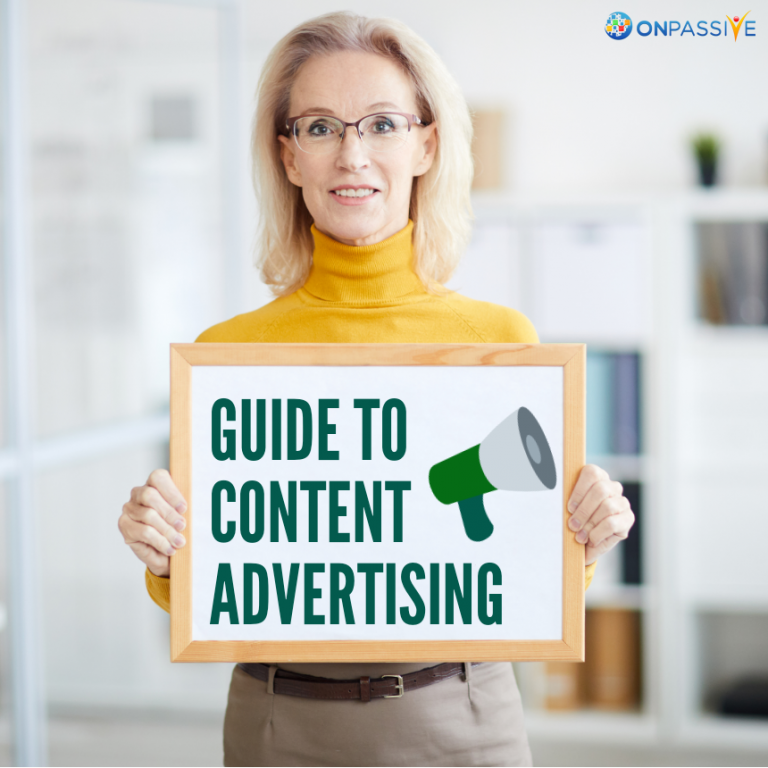
Hello there!
In this article, we will be looking into understanding everything there is to know about content advertising which refers to the practice of paying, to promote a piece of content.
In order to make sure that you use content advertising for your business to ensure maximum productivity and results. It is important to know about the pros, cons and you will understand how it’s important to be unique from other strategies.
Related: 5 Easy Steps To Create A Great Content Marketing Strategy!
What is the difference between Content advertising and native advertising?
The definition of content advertising is pretty straightforward and it is important that you can compare it to other types of advertising. The problem is mainly due to content advertising and yet this remains pretty vague to this day. It is important to understand what exactly constitutes content and how you will be able to advertise it successfully especially when you compare content and native advertising which involves paid promotion and promoting content.
Native advertising is a type of paid promotion that is particularly designed to mimic the content of the platform it’s placed on. If a website specializes in listicle articles, a native advertisement on that site could be a listicle related to a product or service:
Related: How To Create The Ultimate Content Marketing Calendar?
By creating branded content in the same format and style as surrounding content, the advertiser achieves a “native” placement, which is less intrusive to users because it looks and feels just like the content that they consume on the platform, users are more likely to consume.
The difference between content marketing and content advertising:
It’s hard to avoid talking about content marketing when discussing content advertising. After all, the two tactics share many aspects: strategy, content, goals, even platforms in some cases.
Like content advertising, content marketing also focuses on content creation and promotion through all digital channels. It wouldn’t be strange to see both a content marketing and advertising campaign promote the same blog post on Facebook, but What makes it different is how they promote that blog post.
Related: Benefits Of Using A Content Marketing Calendar In 2020!
While content marketing involves paid tactics of disseminating content, content marketing relies on unpaid tactics to reach customers. Optimizing pages for search, link building, organic social media — these are all methods of content marketing.
On the other hand, content advertising uses all paid digital channels to drive visitors to its content. When trying to differentiate the two, the question you should ask is: does this tactic require paid access to a particular audience? If the answer is yes, it’s content advertising. If not, it’s content marketing.
Why would you pay to drive traffic to your content?
Ads for consultations, free trials, and demos, are everywhere. Advertisers often usually consider these bottom-funnel offers that are worth driving paid traffic to, since they can directly add to the bottom line.
On the other hand, ads for blog posts, reports, and ebooks are far fewer. Though they have been increasing, there has been a belief that they’re far less valuable to a business as it is a common one. And it comes from the idea that the important conversions are at the bottom of the funnel.
Related: Why is Content Marketing Vital to Your Business Growth?
Authority:
Firstly, conversions usually happen on your website and anytime you get a visitor to your website, you’re moving forward towards conversions. Secondly, when you advertise content, you’re not just simply selling a product that type of content is valuable, and you’re improving the perception of your brand by establishing yourself as an authority. With authority, the next step comes trust, this will help you to become one of the biggest effectors of conversions.
But that’s just on a technical level, you’re not just getting someone to your website to read a blog post. You will be able to get them to your post, if its link structure is well-done, it will lead them to other posts or landing pages to convert. You’re also getting them to your website to easily collect information about them which can aid in retargeting. However, with retargeting, you can also draw them back with other offers which can easily guide them to the next step in the funnel.
Most importantly, content advertising has been an invaluable method for generating leads. At the top of the funnel, there’s perhaps a no better way to generate leads than with content such as ebooks.
Conclusion:
In conclusion, this has been a complete guide to understanding everything there is to know about content advertising. We hope you found this article informative in understanding how content advertising works and we hope you understand how pros and cons work. This strategy is important in understanding just how different content advertising strategies are different from other types of strategies.


